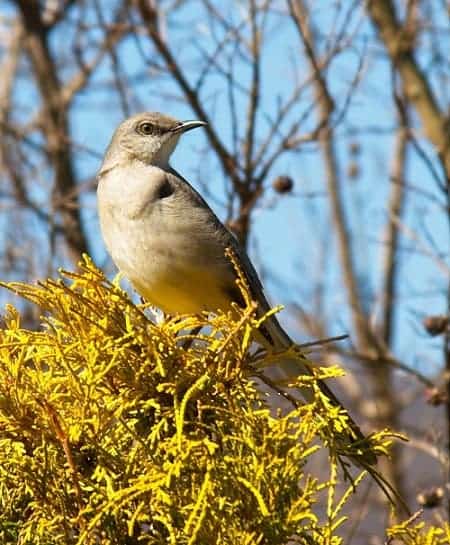
The past 50 years have not been kind to our avian friends. A new study by published in Science has found that since 1970, bird populations in the United States and Canada have declined by 29 percent, representing a decline of almost 3 billion birds. The losses range from songbirds to long-distance migrants such as swallows and backyard birds including sparrows. Of those lost, 90 percent come from 12 bird families.
“Multiple, independent lines of evidence show a massive reduction in the abundance of birds,” said Ken Rosenberg, the study’s lead author and a senior scientist at the Cornell Lab of Ornithology and American Bird Conservancy. “We expected to see continuing declines of threatened species. But for the first time, the results also showed pervasive losses among common birds across all habitats, including backyard birds.”
Research has shown that birds are generally indicators of environmental health. Just as with the canaries in the mines, these deaths indicate that ecosystems across the United States and Canada are being severely impacted by human activity.
Some of the steeper declines included:
• Grassland birds, with a 53 percent reduction in population — more than 720 million birds — since 1970.
• Shorebirds, most of which frequent sensitive coastal habitats have lost more than one-third of their population.
• The volume of spring migration, measured by radar in the night skies, has dropped by 14 percent in just the past decade.
“These data are consistent with what we’re seeing elsewhere with other taxa showing massive declines, including insects and amphibians,” said co-author Peter Marra, senior scientist emeritus and former head of the Smithsonian Migratory Bird Center and now director of the Georgetown Environment Initiative at Georgetown University. “It’s imperative to address immediate and ongoing threats, both because the domino effects can lead to the decay of ecosystems that humans depend on for our own health and livelihoods — and because people all over the world cherish birds in their own right. Can you imagine a world without birdsong?”
While the study did not analyze the causes for the declines, it did find that the losses targeted in the study mirrored losses of birds elsewhere on the planet. That suggests multiple interacting causes that reduce breeding success and increase mortality. It also noted that the largest factor driving the declines is likely the widespread loss and degradation of habitat, especially due to agricultural intensification and urbanization.
Probably the most famous scientist to link human influences to bird extinction was Rachel Carson. When alerted by reports of steep declines in birds of prey and songbirds, she began to examine the negative effects of the pesticide Dichlorodiphenyltrichloroethane (DDT). DDT was the first modern synthetic pesticide, popular after World War II to control mosquitoes and other insects.
Her research led to the 1962 book Silent Spring — the title echoes the poet John Keats’s celebrated line “And no birds sing” — which explained that the pesticide moved up through food chains, from the insects it was designed to kill to the creatures which ate them. DDT accumulated inexorably in tissues, organs, and fat in top predators such as peregrine falcons, ospreys, bald eagles, and pelicans.
By 1972, after public uproar, DDT was banned in the United States and eventually banned around the world except in malaria-prone countries like Africa.
Birds have a plethora of benefits other than just a harboring of bad news, so destruction on a massive scale would not only lead to a quieter, tweet-free world, but would have dire consequences for the environment in itself. However, as has been the case with some waterfowl species, increased efforts to stop the degradation — such as investments in conservation by hunters and billions of dollars of government funding for wetland protection and restoration — can reverse the declines.
“The story is not over,” said co-author Michael Parr, president of American Bird Conservancy. “There are so many ways to help save birds. Some require policy decisions such as strengthening the Migratory Bird Treaty Act. We can also work to ban harmful pesticides and properly fund effective bird conservation programs. Each of us can make a difference with everyday actions that together can save the lives of millions of birds — actions like making windows safer for birds, keeping cats indoors, and protecting habitat.”






